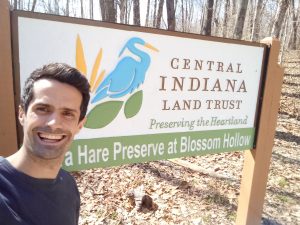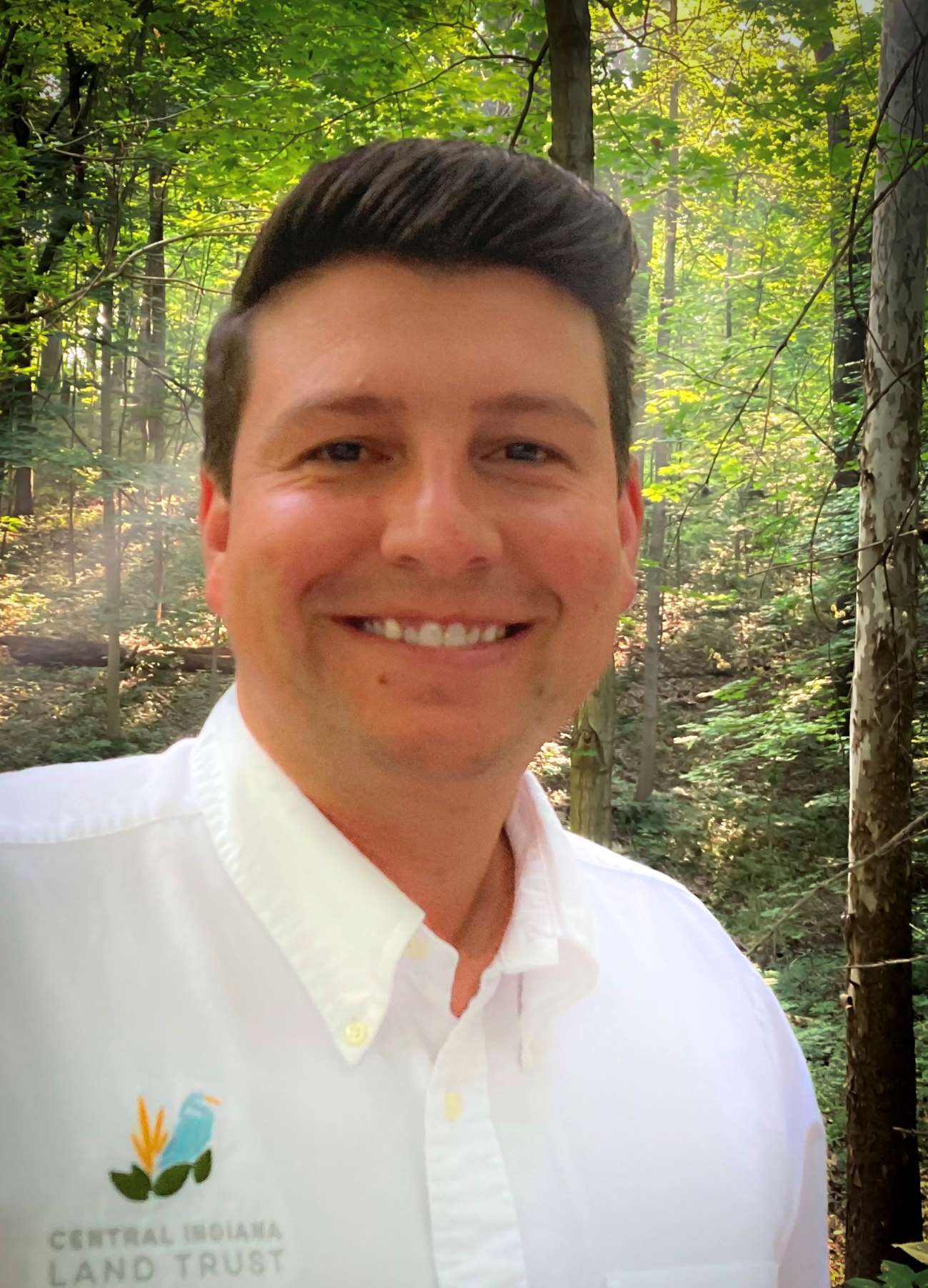Second in a series on the Trek our Trails Challenge by guest blogger Ben Valentine
It’s finally spring and I feel the need to get away from the city and cornfields to celebrate winter’s end. The Laura Hare Preserve at Blossom Hollow—brimming with wildflowers and more red-headed woodpeckers than I’ve ever seen in one day—seems like the perfect spot to do so.
On our hike, we spot our first warbler of the season—a yellow rumped—as well as red-headed woodpeckers and several golden-crowned kinglets. The birds are all flitting about the trees, twitterpated in spring’s delights, and so are we.
I’m no botanist, so reading Michael Homoya’s recent post, What Nature Does in Spring, was a great way to prepare for our little trip. Homoya helped me to better understand the amazing “riot” of spring ephemerals underway. Beautiful flowers cover this preserve’s forest floor, and I feel all the more appreciative for it. But what of the birds?
Reading more about the red-headed woodpeckers, I learn that they are the most skillful hunters and catholic eaters of all woodpeckers, catching bugs midair and even eating mice or other birds. John James Audubon—considered birding’s godfather—reported in 1840 that, due to the abundance of these woodpeckers in orchards, over 100 were shot from one cherry tree in a single day. Today, due to habitat loss, their numbers have “declined by over 2% per year from 1966 to 2014, resulting in a cumulative decline of 70%.” Such precipitous loss of this beautiful species is pervasive throughout our region. The species is now listed as “Near Threatened” on the IUCN Red List, all of which makes me that much more thankful for nature preserves like these, and the good work of Central Indiana Land Trust.
Blossom Hollow lies between Glacier’s End, which is not yet open to the public, and a private conservation easement held by the land trust. Central Indiana Land Trust calls this land the Hills of Gold Conservation Area. But the birds, insects and turtles that frequent this unbroken hardwood forest block only know it as safe sanctuary.

As our little hike comes to an end, it strikes me as simultaneously astounding that conservation easements are such a new invention, but also that they even exist at all. A conservation easement is a legal mechanism between a private landowner and a local land trust or government to protect the land. These agreements last in perpetuity—putting our ecosystems ahead of rapid development—and they are an increasingly useful tool for conservation.
Conservation easements are such a profound tool to make forever promises to lands shaped over epochs, while we humans flit about in much shorter timeframes. The Hills of Gold Conservation Area—still largely defined by the southern edge of glaciers that receded millennia ago—seems like as great a place as any to celebrate protections that last in perpetuity.
The ephemerals will quickly bloom, go to seed, and disappear behind the leafing trees of summer’s heat. The woodpeckers still fly. And I rest assured knowing this land will continue on, long after I’m gone.


Ben Valentine
Guest blogger